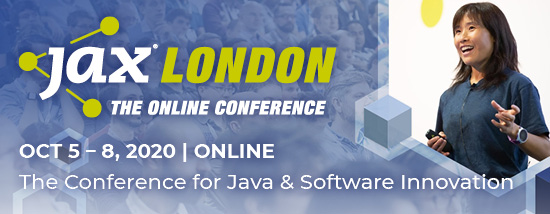JAXenter: According to your research, in the past three years, salaries increased by only 2.25% annually. Is this a unique problem in the data and AI field? Does a salary increase of 2.25% even compensate for inflation?
Mike Loukides: I don’t think this is unique to data, though our survey didn’t look at other fields. For the last three years, inflation has been extremely low: Macrotrends lists 1.23% for 2020, 1.81% for 2019, and 2.44% for 2018. Trading Economics shows inflation rising sharply in 2021, but below 2% for all of 2020 and most of 2019. Therefore, a salary increase of 2.25% has kept pace with inflation. What happens in 2021, of course, remains to be seen. The pandemic has not ended, supply chains are disrupted; and people are spending more money by engaging again in activities that they had curtailed in 2020 such as eating out. That drives inflation up. Will salaries increase accordingly? We’ll see.
JAXenter: Which certifications are most associated with a rise in salary?
Mike Loukides: A majority (64%) of respondents took part in training or obtained new certifications in the past year to build upon their professional skills. The survey also found that 61% of respondents participated in training or earned certifications to solicit a salary increase or promotion. Cloud certifications, particularly AWS and Microsoft Azure, were associated with the highest increases in salary.
SEE ALSO: Cloud-Driven Data Modernization
JAXenter: Which programming languages have the highest average salary and why do you think this is?
Mike Loukides: Looking at salary by programming language, the survey found that professionals who use Rust have the highest average salary (over $180,000), followed by Go ($179,000), and Scala ($178,000). While Python was most dominantly put to work among survey respondents, professionals who reported using this language earned around $150,000. Respondents who used the most popular machine learning tools saw the following average salaries: PyTorch ($166,000), TensorFlow ($164,000), and scikit- learn ($157,000). The highest salaries were associated with H2O ($183,000), KNIME ($180,000), Spark NLP ($179,000), and Spark MLlib ($175,000).
There’s a huge demand for Python programmers, but there’s also a huge supply. There are boot camps turning out Python programmers by the thousands; it’s become the standard language for introductory CS in college; and it’s one of two languages that are typically used for data analysis in the sciences. For Rust and Go, the demand is smaller, but so is the supply. They are relatively new languages, and are not taught much in schools at any level. Knowledge of Python has become a must-have for a lot of technical jobs. It’s something you have to have, and by the same token, you don’t get any extra credit for having it. Rust and Go are leading edge languages with a lot of buzz around them. If you’re claiming Rust and Go competence, you’re showing that you’ve gone beyond the basics, whether or not they’re actually required for the job.
JAXenter: Did the survey reveal anything about the pay gap between women and men?
Mike Loukides: Women’s salaries were significantly lower than men’s salaries, equating to 84% of the average salary for men. This salary differential held regardless of education or job title. For example, at the executive level, the average salary for women was $163,000 versus $205,000 for men (a 20% difference).
The saddest thing about the gender pay gap that the data confirms is that it isn’t a surprise. It’s doubly problematic because I’ve been involved with data since DJ Patil and Jeff Hammerbacher coined the term “data scientist,” and many of the leaders have been women: Hilary Mason, Monica Rogati, Cathy O’Neil, to name just a few. So, while the salary data didn’t surprise me, I’ve always been taken aback by the claims that data science is male dominated. But those two inevitably go together.
JAXenter: What is the benefit of reskilling employees and investing in employee learning? What do both businesses and employees gain from this transaction?
Laura Baldwin: As Mike already mentioned, 64.1% of over 3,000 respondents reported taking training or earning certifications in the last year—and 31.1% spent over 100 hours doing so. 100+ hours! That’s a tremendous investment of time and energy on their part. Why go to such lengths? Because the technologies are constantly evolving, and if you don’t keep up, you’re going to be left behind. And that holds true for both employees and organisations.
Just a few years ago AI was more of a stand-alone field as practitioners worked to understand how to leverage it for business advantage. But as AI naturally collided with big data in practice (data is what feeds AI, after all), those worlds began to merge—something we saw that drove us to combine the O’Reilly Strata Data and AI Conferences a year or so prior to the pandemic. And today, it’s all happening in the cloud, adding yet another twist.
Organisations aren’t oblivious to the pace of digital transformation; they know they need to adapt quickly if they’re going to keep up. So their investment in the reskilling and training of employees is a symbiotic transaction—both parties benefit. Team members learn and grow their skills, and organisations can better pivot and move as technology dictates. For smaller and midsize companies, it’s also far less expensive to retrain the talent you already have than to hire specialists every time you need to implement a new technology.
JAXenter: Job turnover is fairly high for data and AI specialists. Do you believe that this would change if more companies offered internal training and upskilling programs?
Laura Baldwin: Absolutely. We also discovered in our 2021 Data and AI Salary Survey that 22.3% of respondents were considering leaving their positions—and 61% hadn’t been promoted in the last three years. I think there’s a pretty obvious correlation there. Employees need to feel that their work means something and that they’re working toward something. If they don’t, they can’t grow. If they can’t grow, they leave.
So what can you as an organisation do to help? You can empower employees to dive into a new technology, become a subject matter expert, and generate solutions the company can leverage. Then help them do it over and over again so that they build a wealth of knowledge that supports the organisation’s mission. That keeps them stimulated daily, leads to leadership opportunities and promotions, and helps you keep your best talent where you want them. With you.
The best part is, it’s not as daunting a task as you might think. An organisation can jumpstart the process by teaming up with a learning provider that can help empower employees to learn and grow. So it’s easy for them to take an online course, attend a virtual tech conference, get hands-on experience with a new technology through an interactive scenario or sandbox, or earn a certification that proves their proficiency. So they learn, grow—and stay.
SEE ALSO: Why you should consider a Databaseless architecture
JAXenter: Now that remote learning is easily available and has been embraced out of necessity, do you think training will increase even more? What positives have we seen from the rise of remote learning?
Laura Baldwin: As people increasingly work full-time from home, they’ll need significantly more (and more varied) remote learning opportunities. Not just training on new technologies, for instance, but also learning tools that help them find quick answers to questions they used to just ask a co-worker in the next cubicle—which were answers they could trust. In a remote environment that’s not so easy to do, so employees have to find solutions on their own. But can they trust an answer they find through a search engine or on a community bulletin board? And can you as an organisation trust your infrastructure if it’s built with whatever solutions they might find in the wild?
This is what led us to create O’Reilly Answers. It’s a natural language processing engine that searches thousands of trusted titles and videos on our learning platform and instantly delivers the best answers to the toughest tech problems. It even highlights the most useful bit. So our members get the solution they need (and can trust) and can put it to work fast—just like when they could peek over their old cubicle to ask a co-worker.
Also, the rise of the Delta variant means continued hesitancy to attend in-person tech conferences—and right now there aren’t really any to attend anyway. But technologists are craving that kind of learning experience, where they can get fresh insight and inspiration from today’s leading minds. Fortunately, virtual live conferences are really coming into their own and can feed that expert interaction employees crave. They can attend presentations, ask questions, and even network with peers. All with the added perk of no time away from family or travel costs for the organisation. I don’t see that going away even in a post pandemic world. It’s just too convenient.
The post “Employees need to feel that their work means something” appeared first on JAXenter.
Source : JAXenter




















